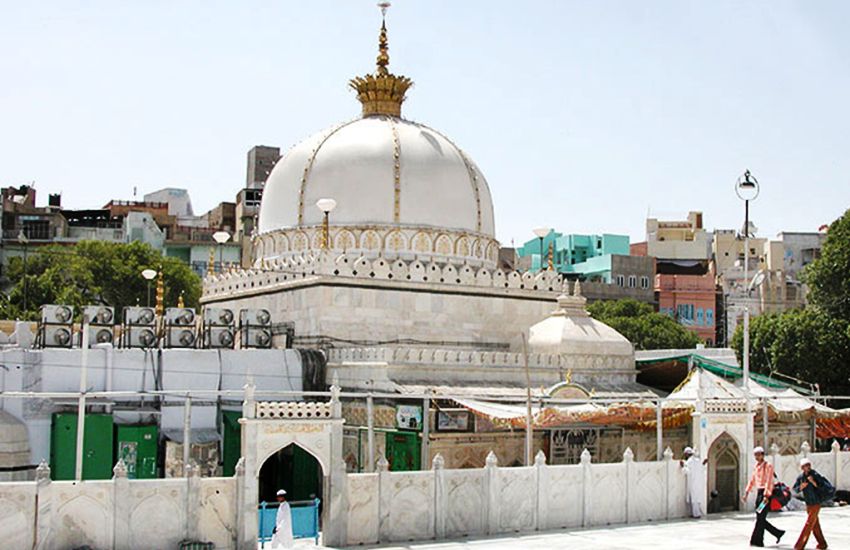Ajmer Sharif Dargah: The Spiritual Heart of Rajasthan

Strong 8k brings an ultra-HD IPTV experience to your living room and your pocket.
Located in the city of Ajmer in Rajasthan, the Ajmer Sharif Dargah is one of the most revered and prominent Sufi shrines in India. It is the final resting place of Khwaja Moinuddin Chishti, a renowned Sufi saint and the founder of the Chishti Order in India. The Dargah, with its rich spiritual significance and historical importance, attracts millions of devotees, both Muslims and non-Muslims, from across the world each year.
In this paper, we have discussed the history, significance, architectural beauty, and cultural importance of the Ajmer Sharif Dargah, and why it remains a symbol of peace, devotion, and unity.
History of Ajmer Sharif Dargah
Ajmer Sharif Dargah is dedicated to Khwaja Moinuddin Chishti, who is lovingly known as Khwaaja Saheb by his devotees. Khwaja Moinuddin Chishti was born in Sistan, in present-day Iran, around 1141 CE. He is thought to have traveled widely in search of spiritual knowledge, and it is believed he came to India in the late 12th century. After years of self-mortification and proclaiming Sufi teachings of love, peace, and harmony, he settled in Ajmer to spend the last years of his life there.
Khwaja Moinuddin Chishti's teachings of universal love and brotherhood transcended religious boundaries, making him one of the most respected and beloved Sufi saints. The tomb was constructed after his death in 1236 CE in Ajmer. It became a pilgrimage center for people from all walks of life, regardless of caste, creed, or religion. The Dargah has become one of the most visited and revered Sufi shrines in the world over the centuries.
Spiritual Significance of Ajmer Sharif Dargah
Ajmer Sharif Dargah holds significant religious values not only for the Muslims but also for devotees of all religions believing in the saint's capability to intercede for their betterment. Millions of followers, inspired by the philosophy of love, service to mankind, and selfless worshiping by Khwaja Moinuddin Chishti, went there through the ages.
The shrine is a place of solace and healing, where people come to seek blessings, guidance, and solutions to their troubles. Devotees visit the Dargah with deep faith, offering prayers, lighting incense, and making vows. It is believed that the saint grants the wishes of the faithful, making the shrine a center of divine blessings.
Every year, the Dargah hosts huge celebrations during the Urs, which is the death anniversary of Khwaja Moinuddin Chishti, and attracts thousands of pilgrims who gather to offer prayers, sing Qawwali (Sufi devotional music), and participate in various spiritual activities. The Urs is a time of unity, where people of all faiths come together to honour the saint and seek his blessings.
Architectural Beauty of Ajmer Sharif Dargah
The Ajmer Sharif Dargah is an exquisite combination of Mughal, Rajput, and Islamic architectural styles. The whole complex is a reflection of the artistic heritage and craftsmanship of the time. The entrance to the Dargah is marked by a massive silver gate, called the Nizami Gate, which leads visitors into the shrine area. The gate is covered with beautiful carvings and inscriptions, giving an indication of the grandeur of the structure.
When visitors enter the main shrine complex, they are received by a majestic courtyard. The Dargah itself is housed within a grand mosque-like structure made of marble and covered with a large dome. The tomb of Khwaja Moinuddin Chishti is located in the central room of the shrine and is covered with a beautifully embroidered cloth, which is offered by devotees as a mark of respect.
The tomb is surrounded by a railing, and within the shrine, the surroundings are extremely pious and reverential. The verses of Quran are engraved on the walls of the shrine along with floral motifs and ornate Arabic calligraphy. Regular Qawwali sessions at the Dargah help to build a divine experience by making everyone feel that he is in unison with God.
There are several other smaller shrines dedicated to various saints and followers of Khwaja Moinuddin Chishti in the Dargah complex. The Jannati Darwaza or Heaven's Door is another important gate in the shrine, and it is believed that walking through this gate brings blessings and peace.
Ajmer Sharif Dargah Timings
The Ajmer Sharif Dargah remains open to visitors throughout the day, though the timing may vary slightly depending on the season and special events. The regular visiting hours are typically as follows:
Morning: 4:00 AM to 12:00 PM
Afternoon: 2:30 PM to 9:00 PM
This place closes only for half an hour between Zohar (noon) and Asr (afternoon) prayers when it opens only for those who will come to perform Namaz. Tourists must visit during morning hours before this place fills with crowds when the view would be highly pleasant.
The largest number of pilgrims arrives in the Urs celebrations that are conducted every year during the month of Rajab. This time, visitors surge at the shrine and special arrangements are made for the pilgrims. The Urs is especially lively at the Dargah, with many cultural performances, Qawwali sessions, and other spiritual activities taking place.
Ajmer Sharif Dargah Entry Fee
There is no entrance fee to visit the Ajmer Sharif Dargah. However, entry for all people is permitted here. The visitors are also requested to make donations, which help in the up-keeping and maintenance of the shrine. Some rituals carry charges, like offering a chadar or making a special prayer for wish.
Visitors are supposed to dress modestly when visiting the shrine. Traditional clothing is the preferred choice, and people are expected to maintain decorum and respect the sanctity of the place.
Ajmer Sharif Dargah: A Symbol of Unity and Harmony
Perhaps one of the most striking things about Ajmer Sharif Dargah is how it makes people from various walks of life and religious beliefs stay in harmony. Khwaja Moinuddin Chishti preached love, peace, and oneness and thus made Dargah a place where everyone belonging to every walk of life comes and prays for the welfare of the humanity.
The Dargah is a place of spiritual solace and inner peace where devotees from all religions are embraced. Pilgrims from different parts of the world come to the shrine, making it one of the most diverse and inclusive places of pilgrimage in the country.
How to Reach Ajmer Sharif Dargah
Ajmer is well connected by road, rail, and air and is accessible to pilgrims and tourists easily.
By Air: Kishangarh Airport is the closest airport that is about 25 km from Ajmer. Kishangarh Airport is well linked to cities such as Delhi, Mumbai, and Jaipur. The distance from the Dargah to the Kishangarh Airport by taxi or a bus would be easy as well.
By Train: Ajmer has a major railway station, Ajmer Junction, which is well-connected to cities across India. Trains from Jaipur, Delhi, Mumbai, and other cities frequently pass through Ajmer, making it easy for travelers to reach the city.
By Road: Ajmer is connected by a good network of highways, and buses are available from major cities in Rajasthan and neighboring states. Visitors can also hire taxis or drive from nearby cities like Jaipur (about 130 km) and Ajmer to the Dargah.
Conclusion
Ajmer Sharif Dargah is an iconic monument of devotion, love, and unity. It is not only a place of religious importance to Muslims but also a spiritual home to the hearts of all people. With its historical and architectural beauty and the preaching of Khwaja Moinuddin Chishti, it still attracts pilgrims from every nook and corner of the world, making it one of the most visited spiritual sites in India.
A visit to Ajmer Sharif Dargah is not just a religious journey but an experience that gives spiritual peace along with cultural heritage and time-befitting messages of love and humanity. Whether one's purpose is to be devoted to the shrine or for tourists who want to explore the very heart of Rajasthan, the Ajmer Sharif Dargah beckons.
Note: IndiBlogHub features both user-submitted and editorial content. We do not verify third-party contributions. Read our Disclaimer and Privacy Policyfor details.


